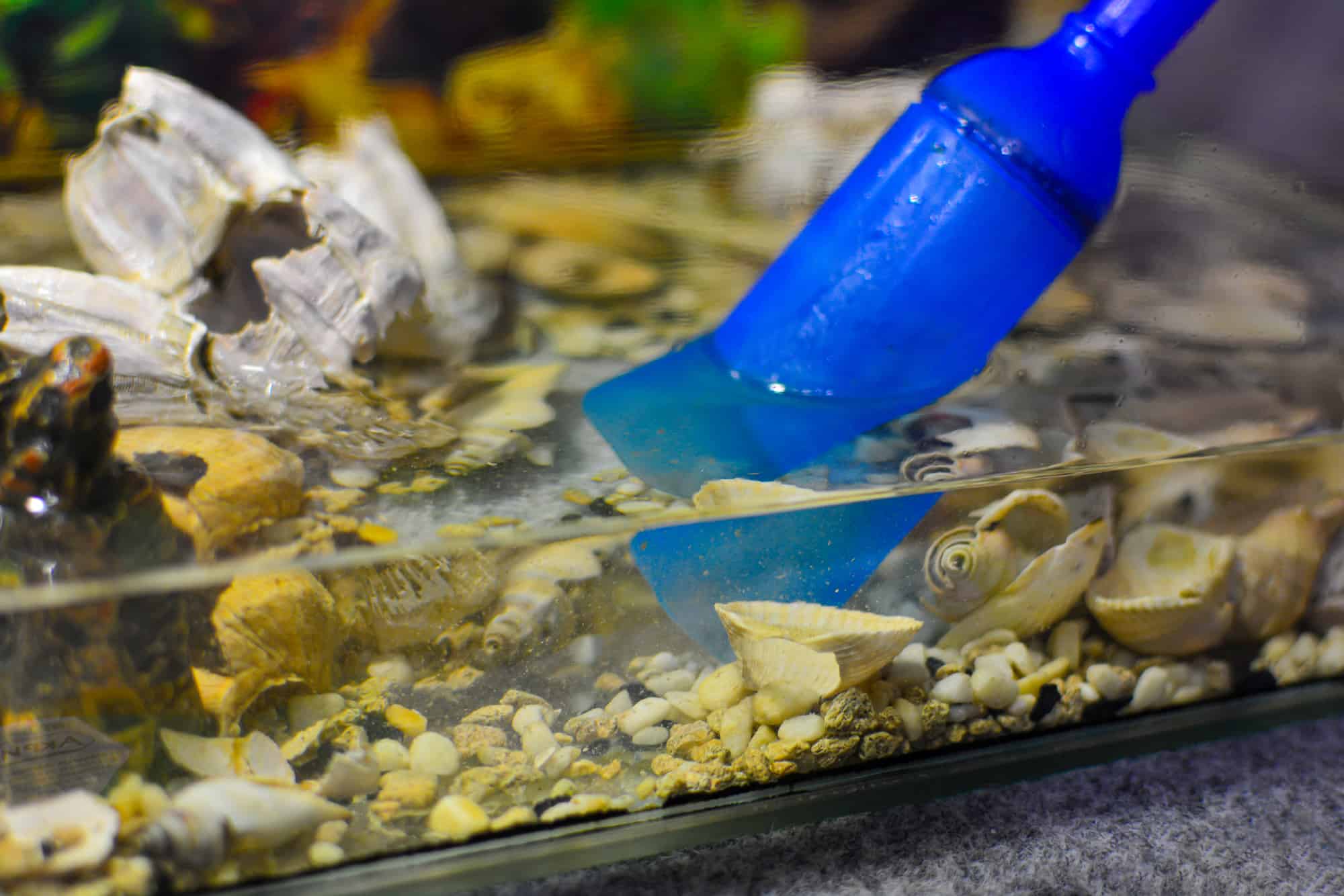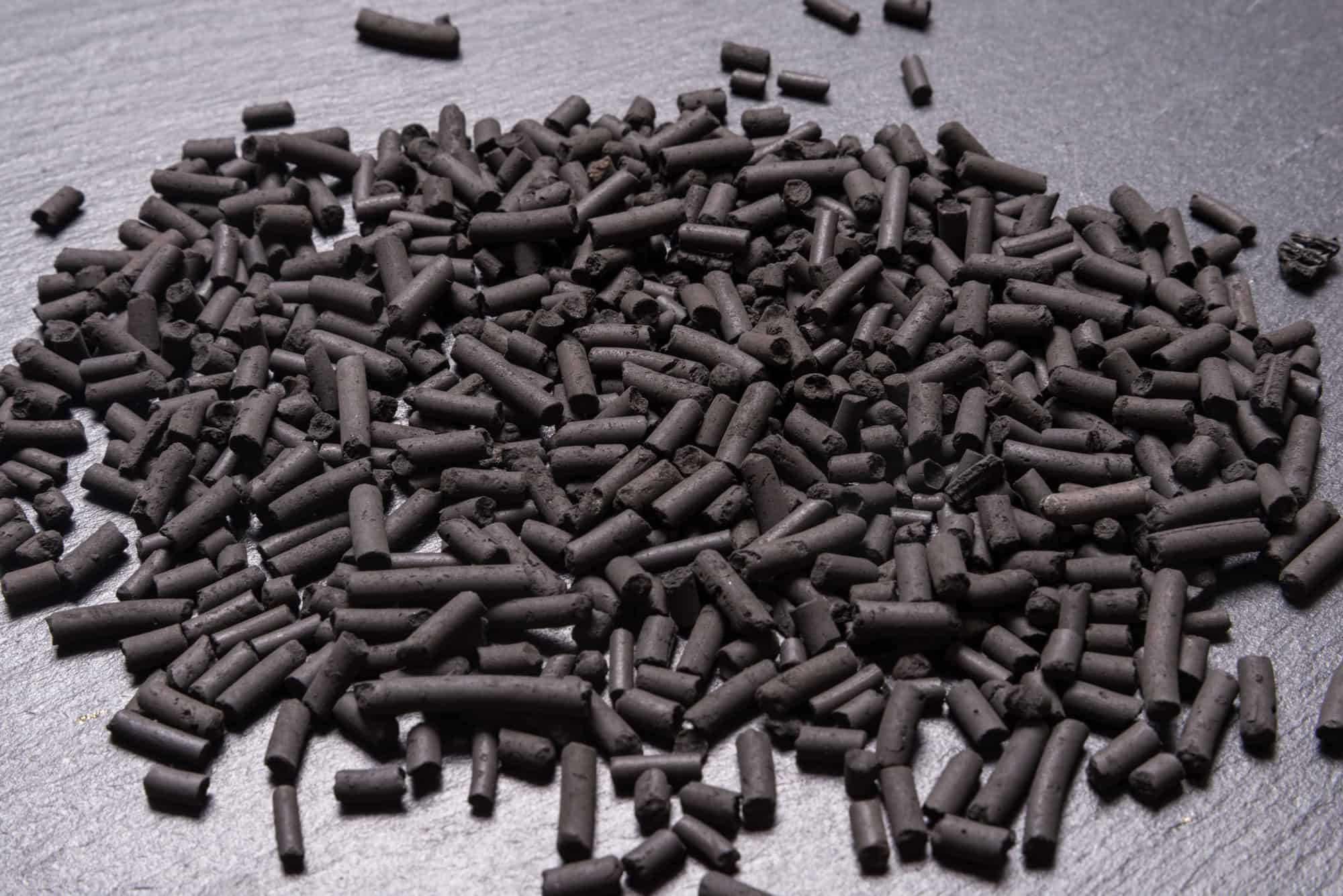If you’ve been in the aquarium hobby for a while, you’ll probably have heard of UV sterilizers. By passing water through UV light, the sterilizer reduces the number of algae and bacteria suspended in the water column.
But while many people claim that UV sterilizers are useful for clearing up cloudy or green water, there are other ways to do that, too. So do you really need this optional aquarium accessory? Here, you’ll find out.
What Is a UV Sterilizer?
A UV sterilizer is an optional piece of aquarium equipment used to reduce the presence of algae, bacteria, and other pathogens within the water column.
The unit works by running the tank’s water past a germicidal fluorescent UV lamp that damages the DNA of the microorganisms within the water column, thereby preventing them from reproducing and reducing their numbers within days.
UV sterilizers are usually either standalone units that use a motor to pump water through a sealed chamber or are passive units without a motor that rely on a canister filter to pump water through them.
Very occasionally, canister filters and hang-on-back filters come with UV sterilizers already installed.
When Are UV Sterilizers Used?
Most aquarium owners don’t use UV sterilizers as they are strictly an optional accessory. Those who do choose to keep one typically only turn it on for short periods to treat green or cloudy water, and to help contain bacterial or even parasitic and fungal infections.
For Treating Green or Cloudy Water
UV sterilizers are especially useful in clearing water of algal blooms that turn the water green, or bacteria blooms that make the water cloudy. When effective, UV treatment may even clear the water within a few days.
For Treating Infectious Diseases
Some aquarists also believe that, when used at the right time, UV sterilizers can help to contain outbreaks of parasitic infections like ich and help to reduce the chances of bacterial infections on vulnerable specimens.
While a UV bulb won’t cure fish infections without additional treatments such as medication, it may help to reduce the pathogens from reproducing, as well as reduce the risks of further outbreaks.
Because of this, some aquarists choose to turn their UV units on when their fish are particularly stressed or injured and therefore more susceptible to infection.
When UV Sterilizers Won’t Help
It must be understood that UV sterilizers can only treat microbes that are already suspended within the water column. Organisms that already are floating on the surface or adhered to rocks, glass, plants, gravel, or your aquatic pets won’t run through the unit and are therefore left untreated.
So, while UV can be very effective for treating algae and cyanobacteria suspended in the water, it won’t be much help for treating algae outbreaks on your substrate, glass, and aquarium décor. Similarly, it will only treat parasites in the phase where their offspring are suspended in the water.
Additionally, UV sterilizers are unlikely to help if your water has been stained yellow or brown. Such coloration is usually caused by tannins that are released by materials such as driftwood, peat, or dead leaves.
In some cases, tannins are beneficial, but they can also be removed with a carbon filter if you prefer to get rid of them.
When UV Sterilizes Should Never Be Used: Cycling a New Aquarium

The one instance where UV sterilizers could prove truly detrimental is when a new aquarium is being cycled.
During cycling, beneficial nitrifying bacteria are busy reproducing and spreading themselves around the aquarium. Not only do they take up residency in your filter, but they also proliferate in the tank’s gravel, and even among rocks and plants.
Since the UV light will sterilize any nitrifying bacteria that are suspended in the water and passing through it, it should always be switched off until the bacterial colonies are firmly established and the tank is fully cycled.
The Pros of Using UV Sterilizers
- Clears green water by combating algae and cyanobacteria in the water column
- Clears cloudy water by reducing bacterial blooms in the water column
- Reduces the number of active pathogens such as bacteria, parasites, fungi, and viruses that are suspended in the water
- Motorized models increase water circulation and potentially aeration, too
- Usually quiet and discreet
The Cons of UV Treatment in Fish Tanks
- Extra investment and increased electricity costs
- Bulbs need replacing every 6-24 months (typically around 9 months) if the unit is left on and some models don’t feature replaceable bulbs
- Doesn’t treat algae and pathogens that are adhered to the rocks, plants, glass, or gravel
- May prove ineffective if bulbs are not strong enough or water passes through the unit too quickly
Featured Products
As we’ve already discussed, UV sterilizers either come as stand-alone units or are attached to an existing canister filter. Here we take a closer look at popular models of each kind that have been receiving the most positive reviews from customers.
COODIA Internal Green Water Killer Aquarium Filter Tank U-V Pump
If you want to try a UV sterilizer without breaking the bank, this handy little standalone unit offers a great solution. While much cheaper than models from big brands, customers of the COODIA ‘Green Water Killer’ report equally high satisfaction rates.
The unit runs on just 5 watts of electricity, meaning it’ll add very little to your electricity bill. Handy features like an optional air intake/bubbler and LED light to indicate when the UV bulb needs replacing shows thoughtful design, too.
Suitable for saltwater and freshwater tanks, many customers confirm that it can clear up green water in 3-7 days. While the manufacturers claim it can handle tanks of up to 75 gallons (more than many of its competitors), some users with larger tanks have reported it less effective.
What we like:
- Very inexpensive
- Mostly upbeat reviews suggest the unit is effective in most situations
- Very low 5-watt energy consumption
- Optional air intake allows for increased aeration
- Indicator light signals time for bulb replacement
What we don’t like:
- Equipment from lesser-known brands is sometimes less reliable
- Some customers have reported faulty parts
- Customers with tanks over 50-gallons sometimes report ineffective performance
Fluval In-Line UV-C Clarifier
An efficient passive UV sterilizer from a trusted brand, the Fluval In-Line Clarifier has been designed to attach to canister filters with 5/8” (16 mm) hosing.
As you’d expect from Fluval, the model features innovative technology such as CCFL (Cold Cathode Fluorescent Light) technology that runs cooler than traditional UVC bulbs and lasts up to 30,000 hours (3X longer).
Most customers report high levels of satisfaction with performance and the 2-year warranty offers reassurance that the unit has been made to last.
Important: Please check your canister filter’s hosing diameter is compatible before purchasing, as some models such as the Fluval FX series feature incompatible hosing!
What we like:
- Fluval is a veteran brand renowned for solid workmanship and products you can trust
- Good reviews suggest this sterilizer is effective for a wide variety of applications
- Compact design means the unit is discreet and takes up little tank space
- A 2-year warranty for defective parts and workmanship gives extra confidence in product quality
What we don’t like:
- While the UV bulb is long-lasting, it can’t be replaced
- Not compatible with all sizes of canister filter hosing
Alternatives to UV Treatment
The most common reason for people installing a UV filter is to clear up green or cloudy water, but for that job, other alternatives can be equally effective and sometimes even longer lasting.
Better Tank Maintenance

Green or cloudy water in aquaria usually indicates poor water quality that has become too high in nutrients.
When uneaten fish food, dead leaves, algae, and fish waste break down, nitrates and phosphates are released into the water which causes algae and bacteria to bloom. While UV sterilization might help to reduce the symptoms, it’s much better to tackle the root cause of the problem.
Here’s our quick list of tank maintenance basics for keeping water quality and water clarity consistently high:
Reduce Feeding
Because uneaten fish food and excessive fish waste are such major causes of poor-quality water that becomes cloudy, it’s imperative to avoid overfeeding. Indeed, overfeeding is one of the leading causes of poor water quality and fish health issues, especially for beginners.
To overcome this unnecessary issue, never feed more than your fish can eat within 2 minutes. Clean up any leftover food before it begins to break down and foul your water.
Carbon Filtration

You may have noticed that many aquarium filters on the market feature carbon filtration, but not all aquarists are well-versed in what that means.
Typically, carbon filtration refers to a filter compartment that houses small pieces of activated carbon, also known as activated charcoal. As water passes through the carbon, its sponge-like structure effectively draws out very small impurities that other types of filter media miss.
By reducing small particles, tannins, and certain dissolved nutrients in the water such as phosphates, carbon filters remove the food that problematic algae and bacteria thrive on, effectively reducing their numbers within days.
While results may not be as fast or dramatic as UV sterilization, when combined with good tank maintenance, carbon filters will usually help your water to remain crystal clear in the long run.
The Downsides of Carbon Filtration
If you do decide to install a carbon filter, just be warned that some of the nutrients it filters out are also necessary for plant growth. Phosphates, in particular, are very important for healthy plant growth, meaning that some planted aquarium enthusiasts avoid carbon filtration altogether.
Additionally, carbon will also filter out many types of fish medication as well as tannins from the water. So, if you are attempting to medicate your fish or aiming to create amber-colored, tannin-filled water, carbon filtration isn’t an option.
Conclusion – Do You Need a UV Sterilizer?
After weighing up the pros and cons of UV sterilizers, what’s the verdict? We conclude that most aquarium owners don’t need a UV sterilizer, but some might find one useful.
With proper tank maintenance and the option of carbon filtration, most aquariums should retain clear water, free from excessive algal or bacterial blooms – which renders UV sterilization unnecessary.
On the other hand, if you’ve tried everything else and are still having difficulties in achieving clear water, you could give one a try. UV treatment may be especially appropriate for those who want crystal-clear water without having to use a carbon filter.





